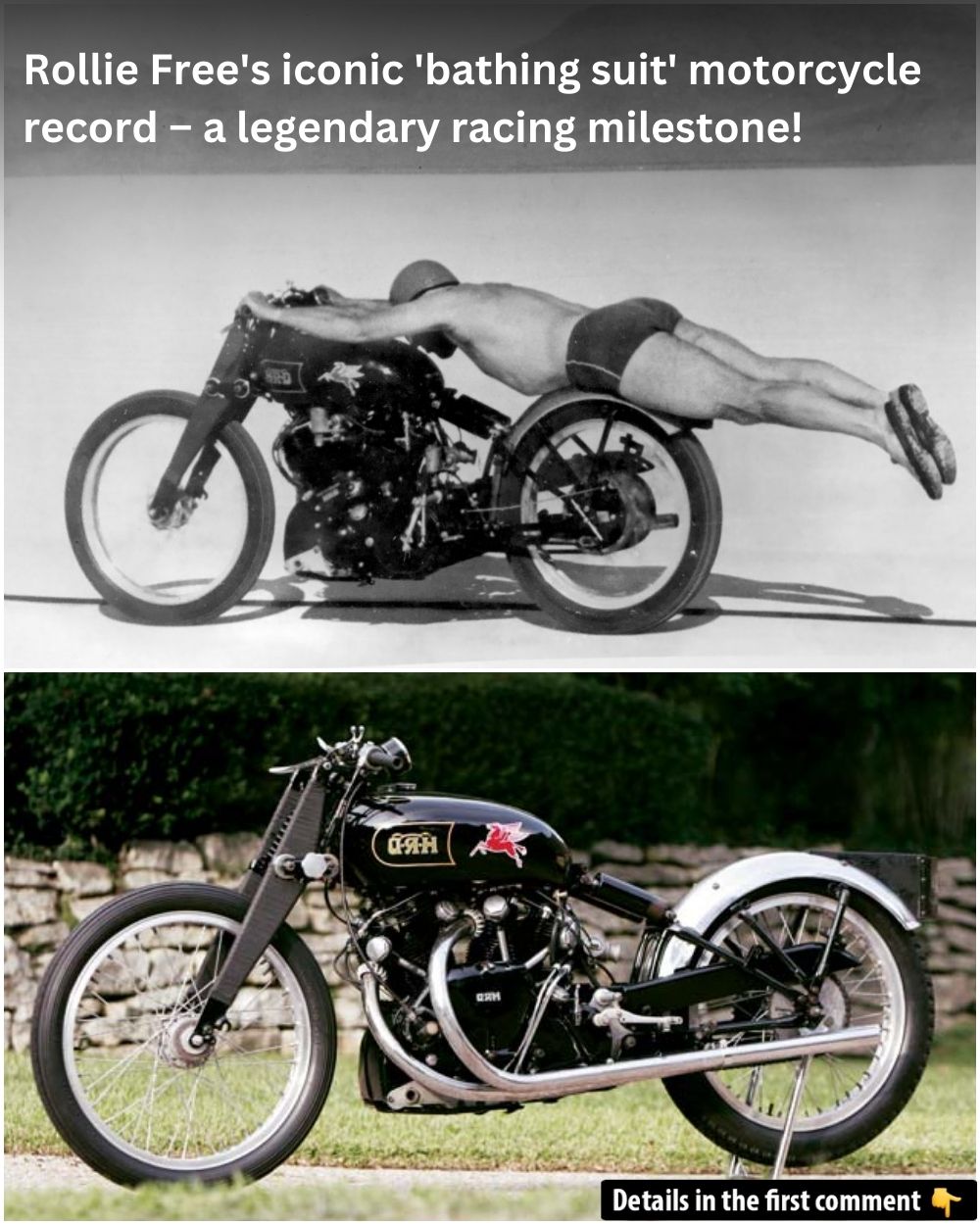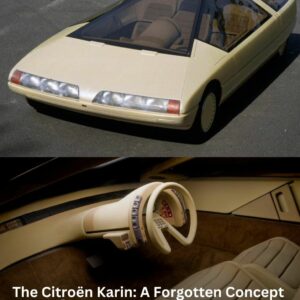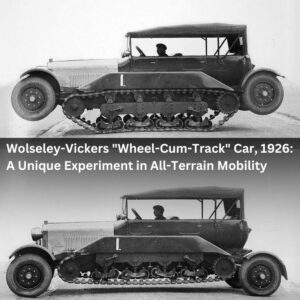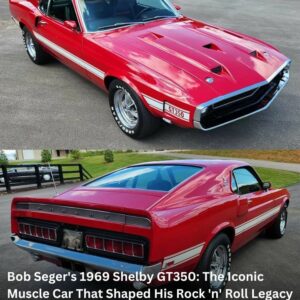The morning of September 13, 1948, would forever change the world of motorcycle racing. Just before 8 a.m., Rollie Free, clad in nothing but a bathing suit, a pudding-bowl helmet, and beach shoes, revved the engine of a stripped-down Vincent Black Shadow on the Bonneville Salt Flats in Utah. Little did anyone know, this daring moment would set an astonishing 150.313mph two-way average, smashing the American absolute motorcycle speed record. The sight of Free stretched out on the bike, seemingly defying both the limits of physics and common sense, would become one of the most iconic motorcycle images of all time.
The Origins of the Bathing Suit Bike
The “Bathing Suit Bike” story began months before that fateful run. In the early days of 1948, Philip Vincent, the mastermind behind the iconic Vincent motorcycles, was on a tour of America, meeting with dealers. It was during his visit to V.L. “Mickey” Martin’s shop in Burbank, California, that he met John Edgar, a prominent West Coast journalist and speed enthusiast. Edgar had a penchant for fast motorcycles and had long admired the Vincent Black Shadow.
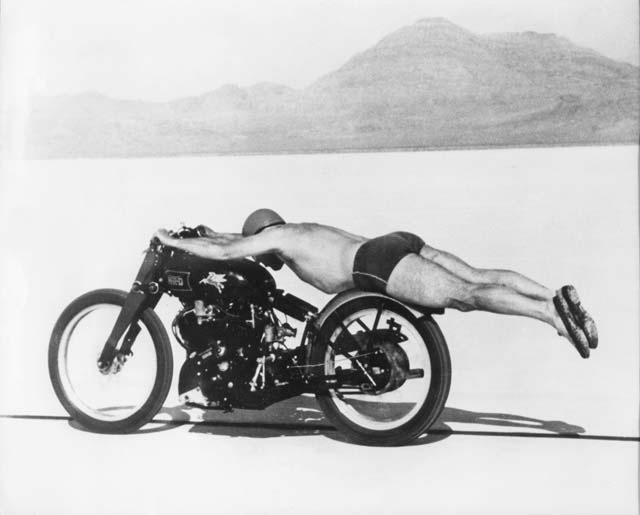
Edgar believed the Black Shadow had the potential to surpass the American speed record held by Harley-Davidson and rider Smokin’ Joe Petrali. The record, which had stood for over a decade at 136.183mph, was ripe for the taking, especially considering that the Black Shadow had already been clocked at 128mph in stock form by Cycle magazine. With some modifications, Edgar believed a Vincent could easily claim the title of the fastest motorcycle in America.
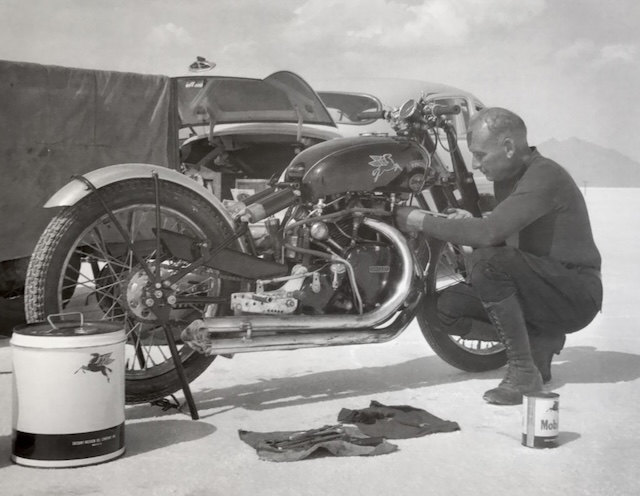
Vincent explained that his factory test rider, George Brown, had already enhanced the Black Shadow for racing. Brown’s bike, Gunga Din, was fitted with specialized Amal racing carburetors, larger inlet ports, high-lift cams, and straight-through exhaust pipes. George had already clocked speeds over 135mph in races, but the track at Dunholme Lodge, an old RAF base in Lincolnshire, was too short for even faster speeds. Edgar was convinced that with a specially tuned Black Shadow, they could break the record.
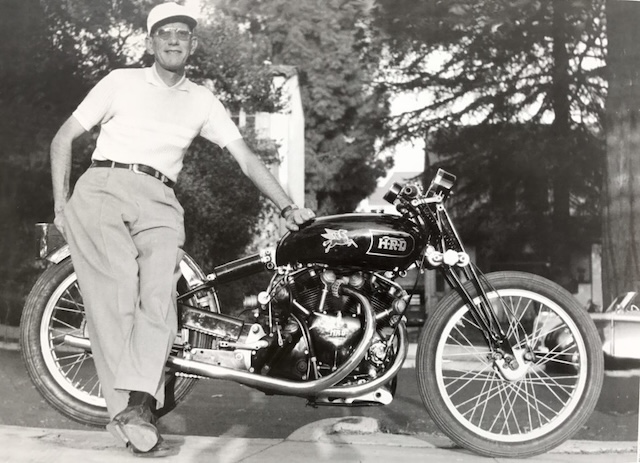
Video
Watch the official Speed is Expensive trailer, narrated by Ewan McGregor!
Rollie Free: A Life Built for Speed
Rollie Free was not just a rider; he was a man driven by competition and an unyielding desire to defeat Harley-Davidson. Known for his fiercely competitive nature—borderline insane, some might say—Free had an intense dislike for the motorcycle giant, which had previously reneged on a promise of factory support. His persistence and desire for revenge would drive him to extraordinary lengths, both on and off the track.
In addition to his competitive spirit, Free was a skilled tuner and had spent years honing his engine tuning expertise. His work with Vincent motorcycles was legendary, and he would soon find himself in the driver’s seat of a project that would make history.
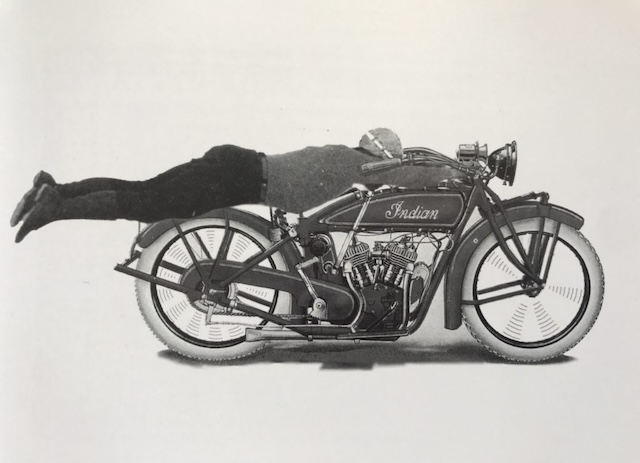
Free’s relationship with John Edgar allowed him to modify the Vincent Black Shadow to an extreme degree. Edgar, who owned the motorcycle, gave Free free rein to build a machine capable of breaking speed records. This bike would go on to set a landmark in the world of speed racing. What followed was the iconic Bonneville run, where Free’s passion for speed and daring would lead to one of the most memorable moments in racing history.
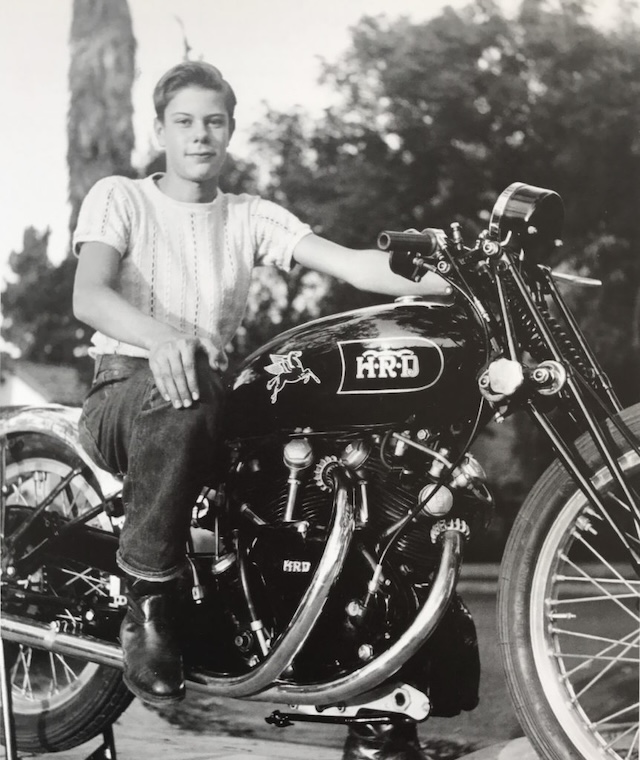
The Legendary Bathing Suit Photo
On that September morning in 1948, as Free rocketed across the Bonneville Salt Flats, he was not just chasing a record—he was defying all odds. The “bathing suit” photo, taken by a photographer tracking Free’s run, became an instant symbol of both rebellion and audacity in the world of motorsports.
The image captured Free stretched out in a prone position over the Black Shadow, with nothing but a bathing suit and beach shoes protecting him. In fact, Free would later claim that stripping down to his swimsuit allowed him to gain an extra 2.3mph, the difference between breaking the 150mph barrier or falling short. It was a move that seemed both dangerous and reckless, yet undeniably effective.
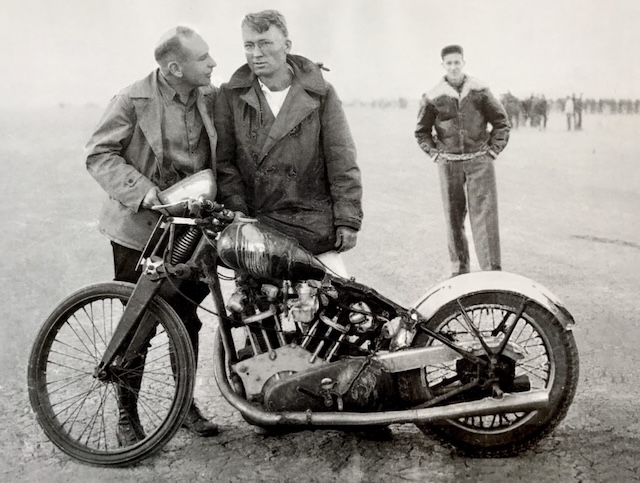
This was a time when the boundaries between man, machine, and nature blurred, and the quest for speed seemed worth any cost. The photograph encapsulated the raw, dangerous allure of speed—a stark contrast to today’s regulated and highly calculated racing environment. Free’s record-breaking run was not just about the numbers; it was about the spirit of adventure and the pursuit of the impossible.

A Lifelong Passion for Racing
Rollie Free’s iconic Bonneville run was the culmination of decades of racing experience. His career began in the 1920s with Indian motorcycles, where he developed his signature prone riding position—a technique he would later refine with the Vincent Black Shadow. His passion for speed and competitive racing was matched only by his dogged determination to push the boundaries of what was possible on a motorcycle.
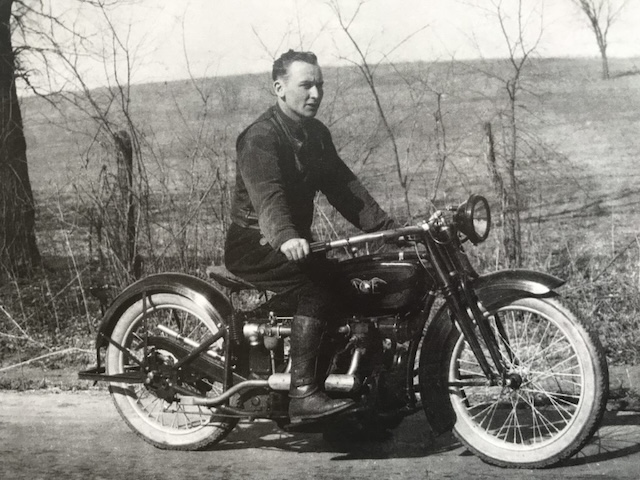
Before setting the Bonneville record, Free had already made a name for himself in the racing world. He was involved in tuning and riding a wide range of motorcycles, including the Indian Scouts and Chiefs, with which he set multiple speed records. His connection with John Edgar and the subsequent collaboration on the Vincent Black Shadow proved to be a perfect match, allowing Free to build a machine that could achieve his goal of breaking the 150mph barrier.
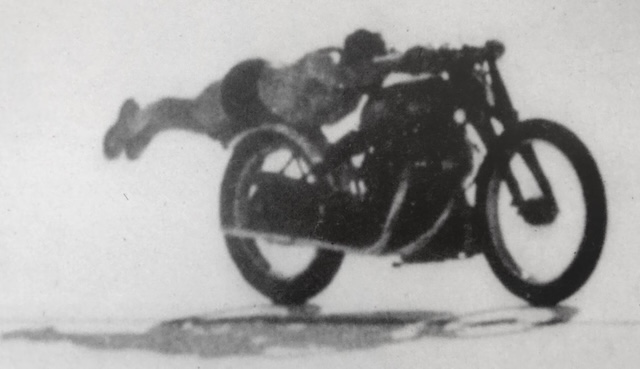
Beyond his racing career, Free was also an accomplished engine tuner, known for extracting every bit of performance from the machines he worked on. His work with the Vincent Black Shadow was just one of many instances where Free’s expertise allowed him to unlock hidden potential in some of the most powerful motorcycles of the time.
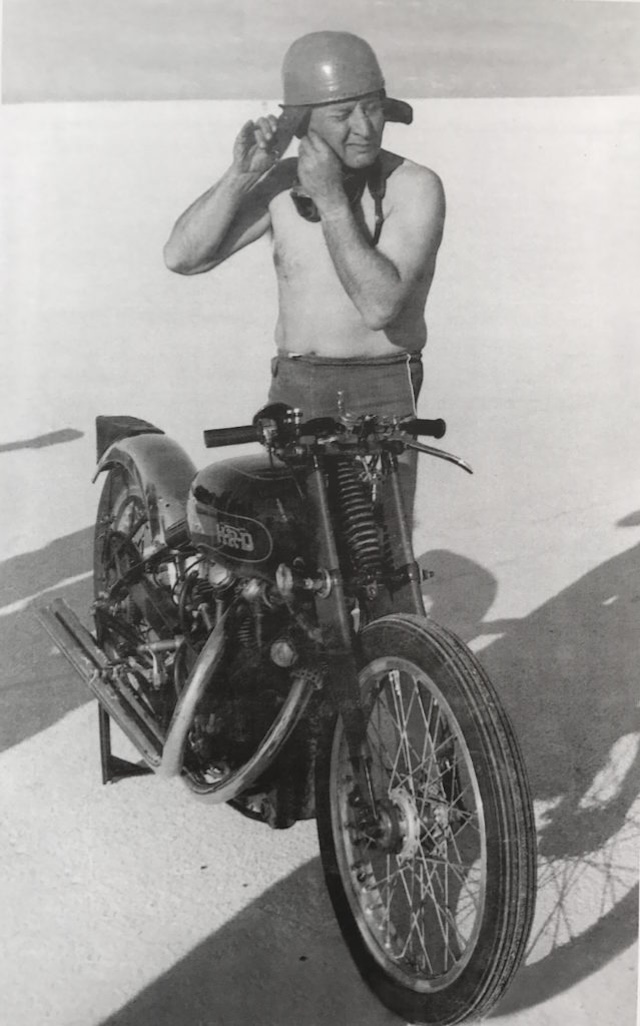
Video
Check out another video uncovering the myth of Vincent Motorcycles’ Black Lightning, presented by Robb Report!
The Legacy of Rollie Free
Though Free’s Bonneville run remains the highlight of his career, his contributions to the world of motorcycle racing extend far beyond that one record-setting moment. His involvement in the early days of the Indian Motorcycle Company, as well as his work with various other manufacturers, cemented his place in the annals of racing history.
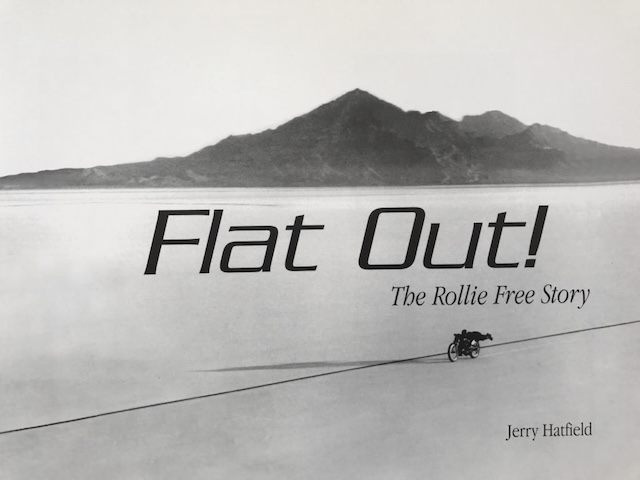
His legendary status was further solidified through his various record-breaking efforts, including his national Class C speed records at Daytona Beach and his participation in the 1947 Indy 500. His skill as both a tuner and a rider made him a respected figure in the motorsports world, and his legacy continues to inspire racers and motorcycle enthusiasts to this day.
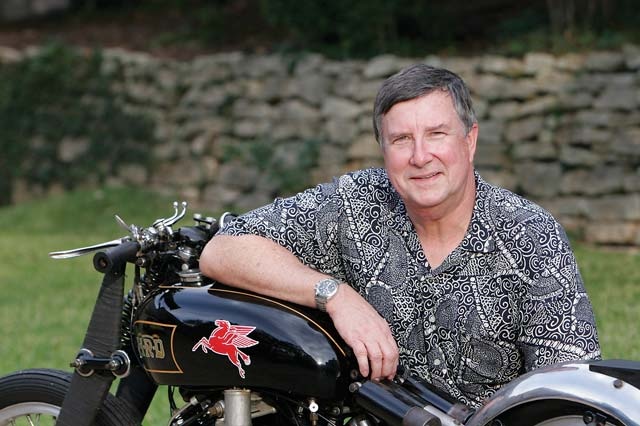
The “Bathing Suit Bike” is more than just a story about a man and his machine. It represents a spirit of adventure, a drive to conquer the impossible, and a passion for speed that transcends time. Rollie Free’s incredible feat on the Bonneville Salt Flats may have happened over 75 years ago, but it remains a defining moment in the history of motorcycle racing.
As we look back on Free’s daring accomplishments, we are reminded that racing is not just about the machines or the records—it’s about the fearless individuals who dare to push the limits and chase their dreams. Rollie Free’s story is a testament to the enduring power of that spirit.
